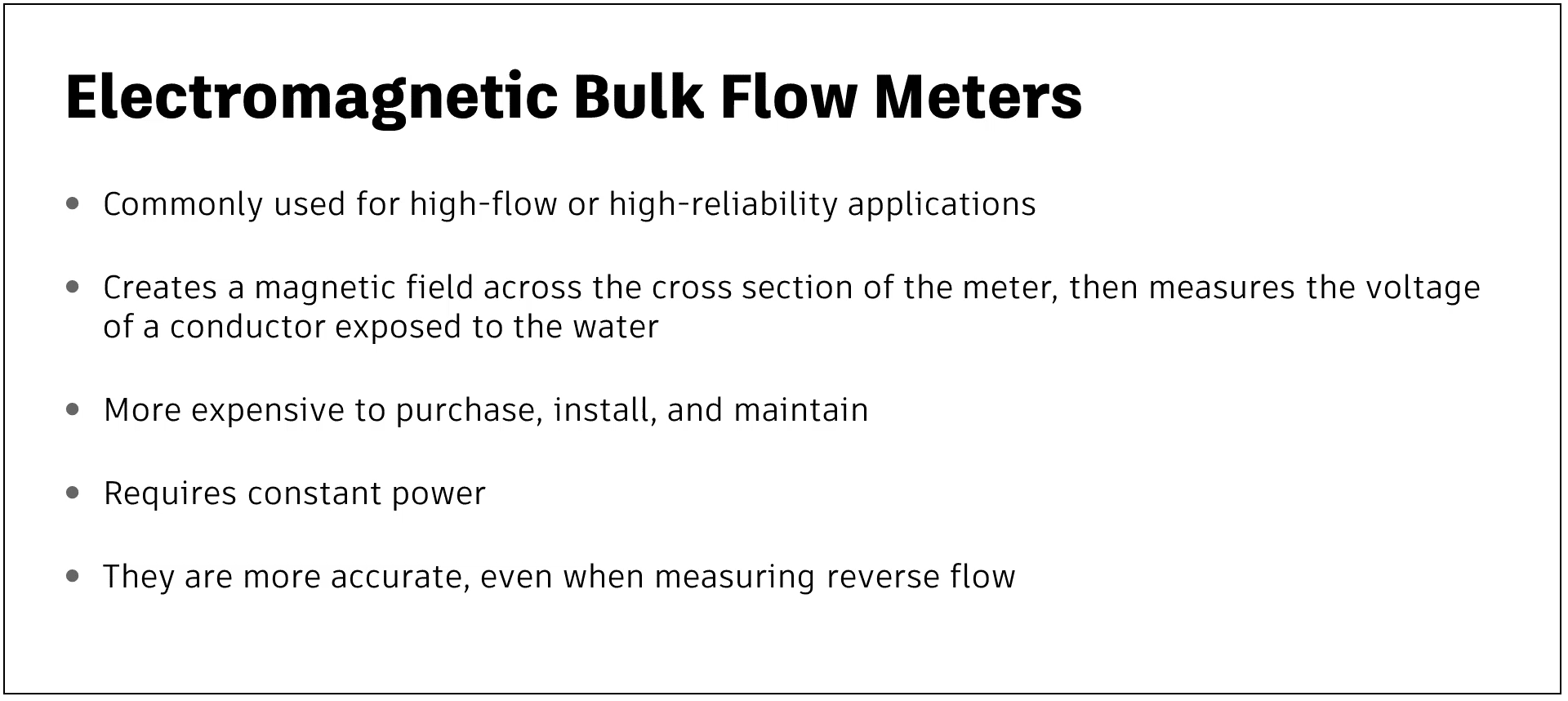& Construction

Integrated BIM tools, including Revit, AutoCAD, and Civil 3D
& Manufacturing

Professional CAD/CAM tools built on Inventor and AutoCAD

Integrated BIM tools, including Revit, AutoCAD, and Civil 3D

Professional CAD/CAM tools built on Inventor and AutoCAD
Transcript
00:03
Because network modeling is based solely on observation.
00:06
There are several observation components of a network to consider
00:10
bulk flow meters and customer meters. Both measure water usage,
00:14
bulk flow meters measure large amounts of flow with
00:17
as little disruption or head loss as possible.
00:19
This includes measuring flow out of a treatment works within
00:23
the water network or even flow for large industrial customers.
00:27
There are two main types of bulk flow meters.
00:30
Mechanical bulk flow meters are the most common with any water network.
00:34
Usually using a turbine or jet mechanism.
00:37
They require no power to operate and
00:39
deliver fairly accurate monitoring with less accuracy.
00:42
Outside of its design range such as reverse flow, lower flow or high flow.
00:49
Electromagnetic bulk flow meters are commonly used
00:52
for high flow or high reliability applications
00:54
as they have no moving parts and do not impede the flow of water.
00:59
They operate by creating a magnetic field across the cross section of the
01:02
meter and then measuring the voltage of a conductor exposed to the water.
01:07
Electromagnetic meters are more expensive to purchase,
01:10
install and maintain as they require constant power,
01:14
but they are extremely accurate.
01:15
Even when measuring reverse flow
01:18
bulk flow meters are essential for determining the demand in a water network,
01:21
particularly the distribution of flow through the day.
01:25
In WS pro bulk flow meters are represented as meter link objects.
01:30
Customer meters also known as domestic meters differ significantly
01:34
from bulk flow meters in both construction and use
01:38
rarely monitored for daily usage.
01:40
Almost all domestic meters use a positive displacement or PD
01:44
design which requires water to mechanically displace an internal mechanism.
01:49
This makes them very accurate, particularly at lower flow rates
01:54
for network modeling,
01:55
using consumption data or usage per property increases
01:59
accuracy instead of relying on equal distribution.
02:03
However,
02:04
customer supply pipes and the meter itself
02:06
are not represented in most network models.
Video transcript
00:03
Because network modeling is based solely on observation.
00:06
There are several observation components of a network to consider
00:10
bulk flow meters and customer meters. Both measure water usage,
00:14
bulk flow meters measure large amounts of flow with
00:17
as little disruption or head loss as possible.
00:19
This includes measuring flow out of a treatment works within
00:23
the water network or even flow for large industrial customers.
00:27
There are two main types of bulk flow meters.
00:30
Mechanical bulk flow meters are the most common with any water network.
00:34
Usually using a turbine or jet mechanism.
00:37
They require no power to operate and
00:39
deliver fairly accurate monitoring with less accuracy.
00:42
Outside of its design range such as reverse flow, lower flow or high flow.
00:49
Electromagnetic bulk flow meters are commonly used
00:52
for high flow or high reliability applications
00:54
as they have no moving parts and do not impede the flow of water.
00:59
They operate by creating a magnetic field across the cross section of the
01:02
meter and then measuring the voltage of a conductor exposed to the water.
01:07
Electromagnetic meters are more expensive to purchase,
01:10
install and maintain as they require constant power,
01:14
but they are extremely accurate.
01:15
Even when measuring reverse flow
01:18
bulk flow meters are essential for determining the demand in a water network,
01:21
particularly the distribution of flow through the day.
01:25
In WS pro bulk flow meters are represented as meter link objects.
01:30
Customer meters also known as domestic meters differ significantly
01:34
from bulk flow meters in both construction and use
01:38
rarely monitored for daily usage.
01:40
Almost all domestic meters use a positive displacement or PD
01:44
design which requires water to mechanically displace an internal mechanism.
01:49
This makes them very accurate, particularly at lower flow rates
01:54
for network modeling,
01:55
using consumption data or usage per property increases
01:59
accuracy instead of relying on equal distribution.
02:03
However,
02:04
customer supply pipes and the meter itself
02:06
are not represented in most network models.
Because network modeling is based solely on observation, two important components of a network to consider are bulk flow meters and customer meters, both of which measure water usage.





How to buy
Privacy | Do not sell or share my personal information | Cookie preferences | Report noncompliance | Terms of use | Legal | © 2025 Autodesk Inc. All rights reserved
Sign in to start learning
Sign in for unlimited free access to all learning content.Save your progress
Take assessments
Receive personalized recommendations